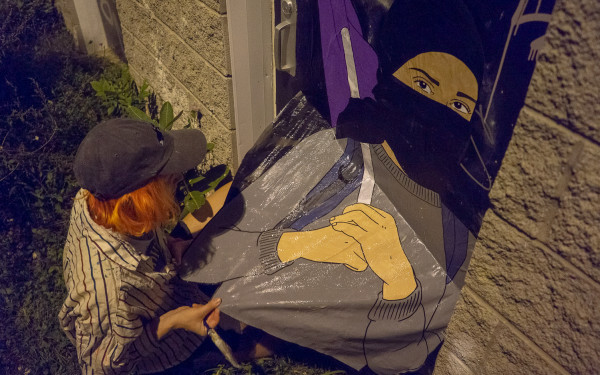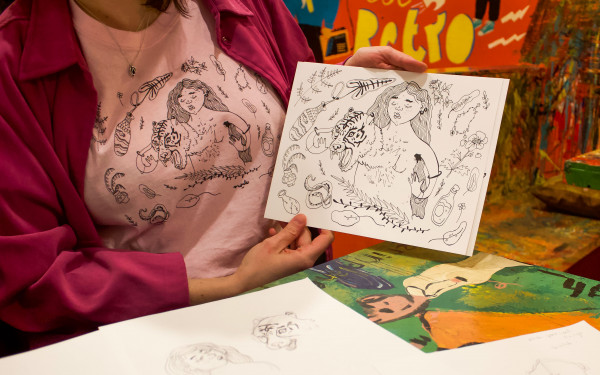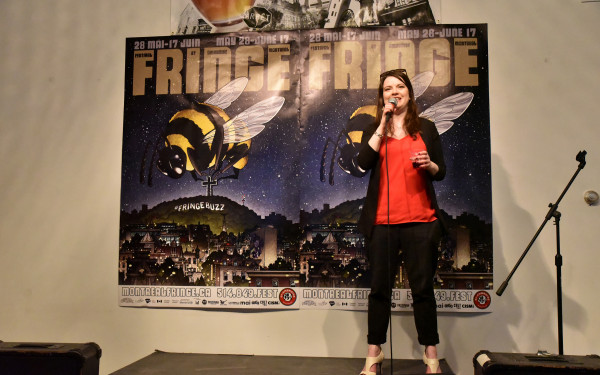As Above, So Below
Art Souterrain Festival Brings Art to the Underground and the General Public
Whether you are left with feelings of joy and admiration, or just some kind of confusion about what you just witnessed, most art is produced to elicit feelings and reactions from an audience. Still, the question remains: “must art be appealing?”
Showcasing a mixture of contemporary art and Montreal’s architectural heritage, the eight annual edition of Art Souterrain seeks to answer that question.
The festival is put on by a local non-profit organization of the same name. It began on Feb. 27, in conjunction with the city’s Nuit Blanche expos, and runs until March 20. Pedestrians can wander the underground passages of the city for seven kilometres to view the works of 86 international and Canadian contemporary artists for free.
As someone who isn’t a local of Montreal, I was fairly unaware of the layout under the city’s streets, which made exploring the underground difficult and revealing.
Most of my experiences using the subterranean transportation networks in the city prior to Art Souterrain have involved sweating from wearing too many layers, or trying to ignore the overpowering smell of urine wafting from the metros.
Arriving at McGill station—the starting point for one of three underground circuits set up for viewing—there seemed to be a lack of signage directing people to the predetermined routes.
I failed to locate a physical map upon arrival and only after a few minutes of searching was I able to find one online. Even armed with that, not knowing my way around made navigation tough.
At this point in my journey, I attempted to use the audio guide designed by Art Souterrain to accompany the various exhibits. In fitting Quebec fashion though, the English version of the audio on the festival site kept giving me a 404 Error, which prevented me from loading it.
Despite my loose grasp on the language, I loaded the French version of the tour and carried on.
While trying to decipher the seemingly cryptic messages on my linguistic adventure, eventually I noticed there were arrows directing festival-goers along the designated routes, which made things slightly more clear.
Having now gotten over my initial navigating blunders, I was finally free to take in the various mixed medium exhibits which were scattered throughout the tunnels and over ten different buildings.
Installations ranged from multi-media exhibits with video or audio accompaniment to more traditional photography, sculptures and prints.
Something about art galleries just seems intimidating to me as a person with little to no knowledge of art. One of the festival’s missions is “to make art accessible to a wider audience by taking it out of its traditional exhibition spaces,” and I think they accomplish this well.
The setting of Art Souterrain made me feel welcome to spend as much time with each piece as I wanted. The public setting reinforced the accessibility of the artworks and made me more comfortable to explore the installations than the seemingly more sterile and cold environment of a museum or gallery.
By placing the art in everyday places the city becomes part of the canvas. The textures and colours of everyday Montreal are incorporated into the art.
Even the sounds of the underground intertwine with each individual exhibit. The hum of the metro and bits of conversation you hear when people walk by are inseparably meshed into the viewing experience.
With the exception of the video exhibits, which allowed the viewer to be immersed in a darkened box to watch, nearly every exhibit played on the theme of incorporating Montreal’s dynamic scenery and architecture.
Checking it out gave me the opportunity to explore a side of Montreal that I had neglected in the past. During the summer, it is easy to get lost in the countless parks and outdoor festivals that the city has to offer.
The festival brings some life to the often neglected and unappreciated underground, which sustains the city with shelter during the long, cold winter.





